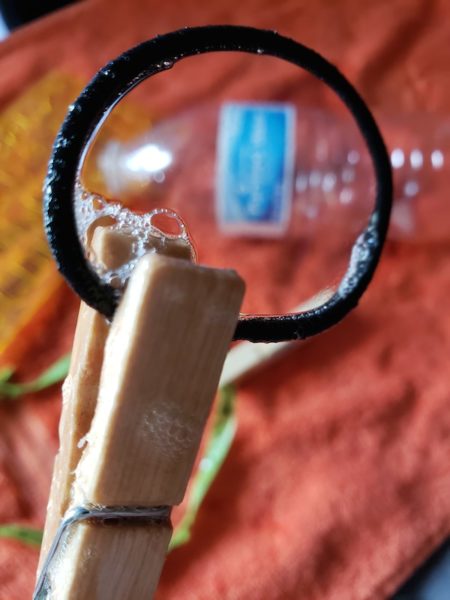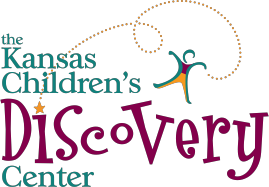Supplies:
- Bubble solution. (Don't have it? You can engineer that, too!)
- Clothespins, sticks, dowel rods or cardboard.
- String or ribbon.
- Elastic hair ties or rubber bands.
- Empty plastic water bottle.
- Optional: Pipe cleaner or twist tie.
- Optional: Tape, push pins or glue.
- Optional: An old tshirt or rag (that can be ruined).
Directions:
- Create multiple tools out of different materials and try blowing bubbles to see which tool works the best.
- Tip: in order to blow bubbles using the bubble tool, the tool needs to be able to have a stream of airflow through an opening in a material.
- Gather your results and determine which tool is the best.

Tool creation suggestions:
- Ribbon and clothespins: Create a circle using ribbon. Connect a clothespin to one side of the circle and one clothespin to the other side of the circle. When you test it in bubble solution, keep the circle close together, then pull apart to create the circle needed to create a bubble.
- Pipe cleaners, hair ties, rubber bands or twist ties: Create circles using pipe cleaners, hair ties, rubber bands, or twist ties. Connect them to a clothespin which will act as the bubble wand handle.
- Empty water bottle: Cut the bottom of a water bottle off. Remove the lid. Dip the opening at the bottom in the bubble solution. Blow into the smaller opening of the water bottle, which will force the stream of air through the bottle to create the bubble at the larger opening.
Ways to expand it:
Create a table or graph of your testing! You could use chalk on the ground outside to record.
What kids learn:
- Basic engineering skills. Engineers solve problems with constraints, in this case, limited materials and air pressure. They learn to solve problems by using the engineering design process: asking questions, coming up with solutions, building, testing and improving.
- Fine motor skills. Kids practice using the small muscles in their hands later used for writing.
- Experimentation! When kids experiment, they're learning how to learn. Failure is an important part of experimenting, so let kids try things that won’t work. It’s how they figure things out!
- Interactions between materials. When mixing different materials together, kids learn how the combination acts before, during, and after the mixing.
Vocabulary:
- Constraint: a limitation or restriction. Materials, time, and space are common constraints. Real engineers have to work around constraints all the time!
- Force: energy caused by a push, pull, or gravity. In this activity, your lungs force air from your body against the soap film to create a bubble.

